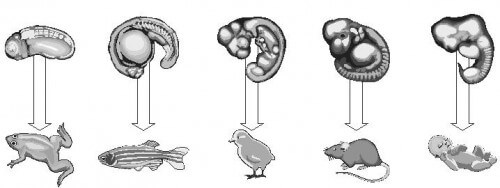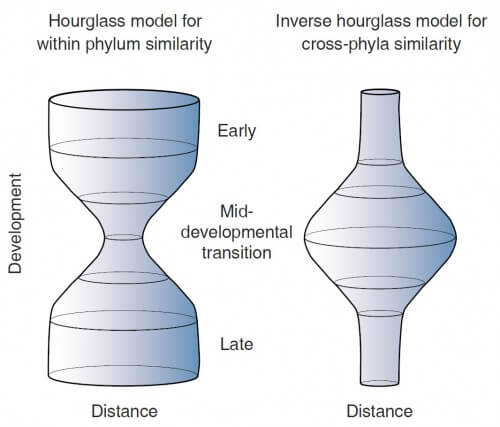The intercontinental research, conducted under the leadership of Prof. Itai Yanai from the Technion, is published in the journal Nature

The journal Nature published a large-scale study led by Prof. Itai Yanai from the Faculty of Biology at the Technion. The research, which was conducted on several continents, presents for the first time a precise, evidence-based molecular definition of the phylotypic stage in the development of the embryo - a critical stage in which the buds of the various body organs appear. In addition, the study provides an unprecedented information base regarding the transcriptome (all gene expression) of the embryo, including in animals that have not yet been "genetically mapped", and also precisely defines the term "system" in the model that classifies the animal world.
"Phylum" is a term coined by the Swedish botanist Carlos Linnaeus in 1735, as part of the formulation of the taxonomy (classification model) of the animal kingdom. In Linnaeus' taxonomy several categories, from each of which other categories diverge; Each kingdom (kingdom is the most inclusive category) is divided into systems and from those into classes, series, families, genera and species.
Since the publication of Linnaeus' taxonomy, there have been many debates in the scientific community about the accuracy of these definitions and the inclusion of specific animals in the various categories. Now, in the dramatic publication in Nature, Prof. Yanai presents the first distinct molecular definition of the term campaign. This definition is based on a similarity in the common mechanism responsible for the phylotypic phase.
Characterization of the phylotypic stage
The philotypic stage is a basic concept in the development of the embryo. At this stage, many organ-buds appear that will gradually develop into complete organs according to the growth plan (Body Plan) characteristic of each system. The phylotypic stage represents a general outline in which functional organs such as the shell of the turtle, the nose of the pig, or the large brain of man begin to take shape on the way to their full development.
The difficulty in comparing different animals such as a fly, a fish, a sponge and a worm is due to the fact that the stages of their development are not uniform. Now, based on an unprecedented molecular database collected and analyzed during the research, the rule defining the phylotypic stage of each living creature in all systems of the animal kingdom has been formulated for the first time. In addition, as mentioned, the study presents the first molecular definition of the term campaign. A set, it now turns out, is "a group of species whose similarity (in genetic expression) reaches the maximum level in the phylotypic stage; If the similarity between two species at this stage is minimal, then they belong to two different systems."

Implications for research and medicine
The Technion (as a leading institution), the Weizmann Institute and academic institutions in Germany, the USA and Australia are partners in the research that is now being published. In the study, ten species of animals from different systems were examined using the research tool called high-throughput DNA sequencing, which enables a precise and complete characterization of the genetic expression. In each of the ten species, about 70 individuals (embryos) were tested and in some of the species, as mentioned, this is the first sequencing in history. The result: an unprecedented database, which will be used in many studies and will also influence the world of medicine in contexts such as the diagnosis of genetic diseases and their treatment.
Following Dawkins
Prof. Itai Yanai was born in 1975 in Haifa but grew up in Boston. After a bachelor's degree in computer engineering and philosophy of science, he switched to biology following Richard Dawkins' book, "The Selfish Gene", and went on a volunteer period at the Pasteur Institute in Paris. He then completed a doctorate in computational biology at Boston University, after which he came to Israel for a post-doctorate at the Weizmann Institute. After another post-doctorate, at Harvard University, he returned to Israel in 2008 and joined the Technion as a faculty member in the Faculty of Biology. Since then he has won several large research grants, which were mainly used to finance the international research that is now being published.

3 תגובות
Igal,
Did you not understand what I wrote or the article?
Ahh
I understand the logic in that from the pilot stage each species develops differently, but how is it that the pilot stage has maximum identity and the stages before that are different? If there is convergent evolution here when, for example, the eggs are different but at the pilot moment the embryos are identical?